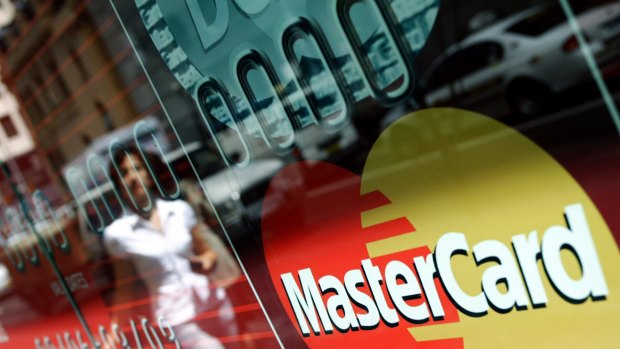This was published 8 years ago
Travel money cards: Are they worth getting?
By Esther Han

Mastercard says travel money cards have exploded in the past two years.Credit: Michel O Sullivan
Exchanging money has topped the list of the biggest sources of cash-related problems encountered by Australian holidaymakers, new data shows, as preloadable travel money cards boom.
A quarter of the 8 million Australians who made at least one trip overseas in the past year experienced money troubles during their travels, according to a Commonwealth Bank report.
Of those, 40 per cent faced difficulties when exchanging money, 19 per cent lost their credit card or had it stolen, 13 per cent had that issue with cash, and 13 per cent were victims of credit or debit card fraud.
Andrew Cartwright, Mastercard Australia's senior vice-president, said "prepaid" travel money card products had grown by 70 per cent in the past two years, driven by a consumer desire to better protect themselves and their money while overseas.
"It's exploded since 2013. We're seeing strong demand for these relatively new products. We have cards issued by CBA, NAB, then there's the Qantas Cash Card and the Bendigo Cash Passport," he said.
"There's a strong consumer appetite and demand … because you can lock in exchange rates, use it for budgeting, and easily spend the money back in Australia."
A Qantas investor briefing in May shows its Cash Card, launched in 2013, is on track to have $1 billion loaded by the end of this month. It has at least 300,000 active cards in circulation.
With competition in the travel money card market heating up, CommBank announced on Monday that it had integrated its travel money card into its popular app.
"There's nothing worse than losing your cash or having it stolen while on holiday and having to spend hours of your well-earned break trying to arrange additional funds," said Angus Sullivan, CommBank's head of consumer finance, payments and strategy.
"Travel money card users can now check their account balance and reload, fee-free, in real-time using the CommBank app, whenever and wherever they are in the world."
In 2014, Australians over the age of 15 made about 8.1 million trips overseas and spent, on average, about $6000 on each one, according to Tourism Research Australia.
In 2009, we made nearly 5.6 million trips, spending about $100 less on each one.
Michelle Hutchison, comparison website Finder's money expert, said the integration of the CommBank's travel money card and app, an industry first, was welcome news.
"With the other banks, you can't or it's a separate app where you can check your balance and transfer currencies between currencies. But mostly, you have to go over the phone, or find a computer," she said.
"The integration is handy solution for CommBank customers who are getting a travel card and going overseas. It's really convenient. It's a welcome initiative."
Consumer advocacy group Choice said the travel money card was a "fresh opportunity" to hit customers up with fees and exchange rate margins. But it also said, in some cases, it could be the financially smarter option.
"If you're travelling for a couple of weeks or more and shopping is on the agenda, a travel money card is a good idea," said Choice spokesman Tom Godfrey.
"But if it's a quick jaunt and your total spend outside of hotels and air travel will be limited to $800 or so, and your ATM use will be minimal, a travel money card probably won't be cost-effective."
Commbank's top tips for avoiding money misadventures
1. Failing to plan is planning to fail – Just as you do with your flights and accommodation, make sure you give yourself enough time to properly plan your overseas spending. Our Travel Money Card gives you the ability to lock in exchange rates with multiple currencies to use at ATMs, in-store, over the phone or online.
2. Take a variety of payment options – As payment methods vary from country to country, it's always advisable to carry some local cash alongside your credit card and pre-paid travel card. Having a variety of options will also mean you're not left high and dry should you misplace a card, run out of cash or find yourself in an emergency.
3. Put a temporary lock on a misplaced credit card – If you misplace your credit card in your hotel room, in transit or at a local restaurant, you can use NetBank or the CommBank app to put a temporary lock on your card, while you look for it. You can unlock it again when you find it.
4. Make sure your card isn't overseas, if you aren't either – Use NetBank or the CommBank app to activate international in-store payment lock on our credit card when you return home. This will make sure your credit card isn't being used overseas.
5. Err on the side of caution – Your best bet is your safest bet in an unfamiliar country. Simple things like covering your PIN, not letting your card out of your sight, not carrying lots of cash around with you etc. can make the difference between being the victim of a money misadventure and avoiding one.
See also: The six dumbest ways travellers try to save money
See also: What's the best way to manage your money travelling in Asia?
Sign up for the Traveller newsletter
The latest travel news, tips and inspiration delivered to your inbox. Sign up now.